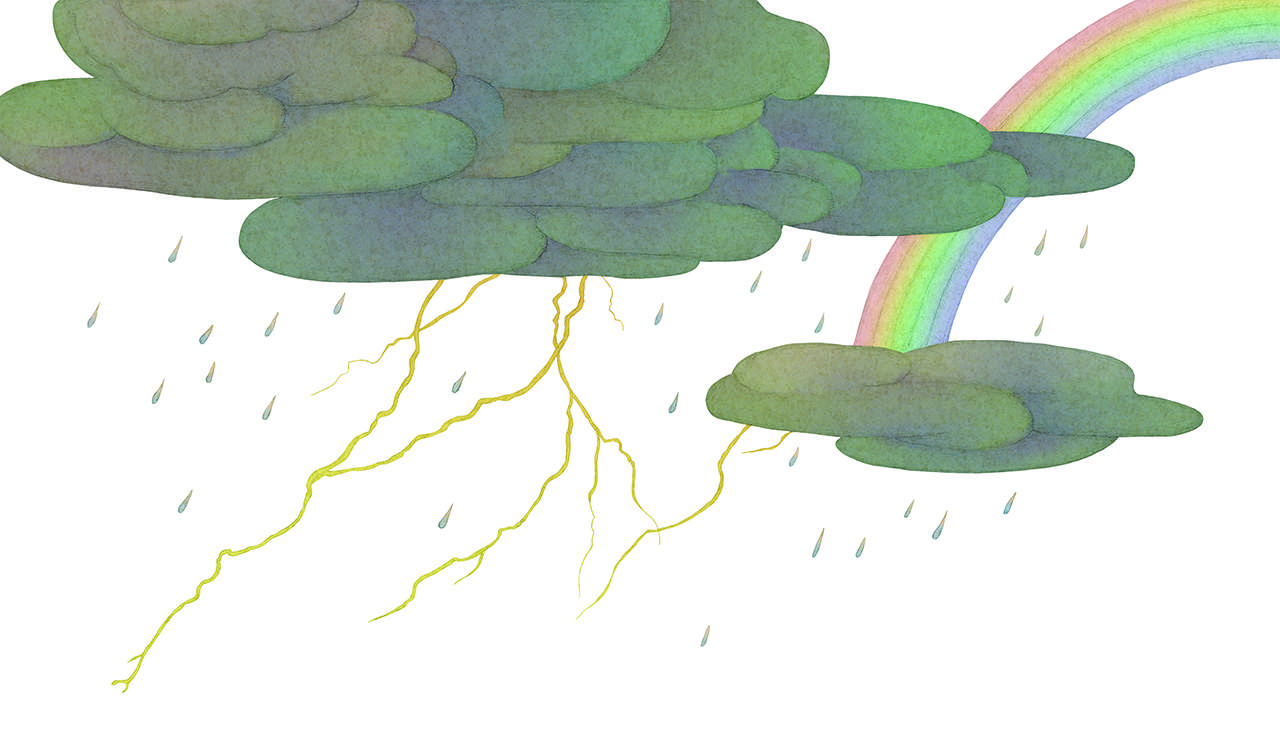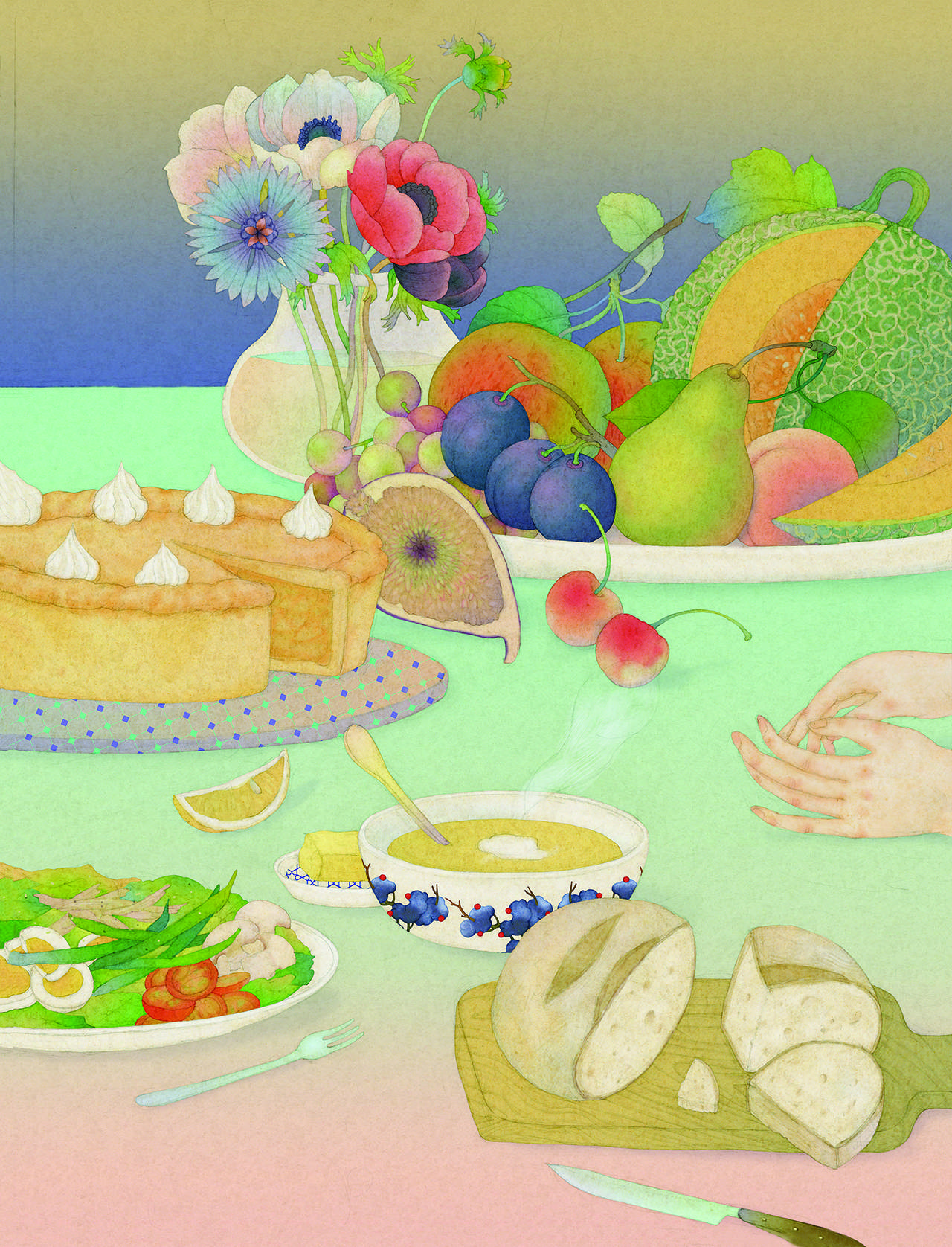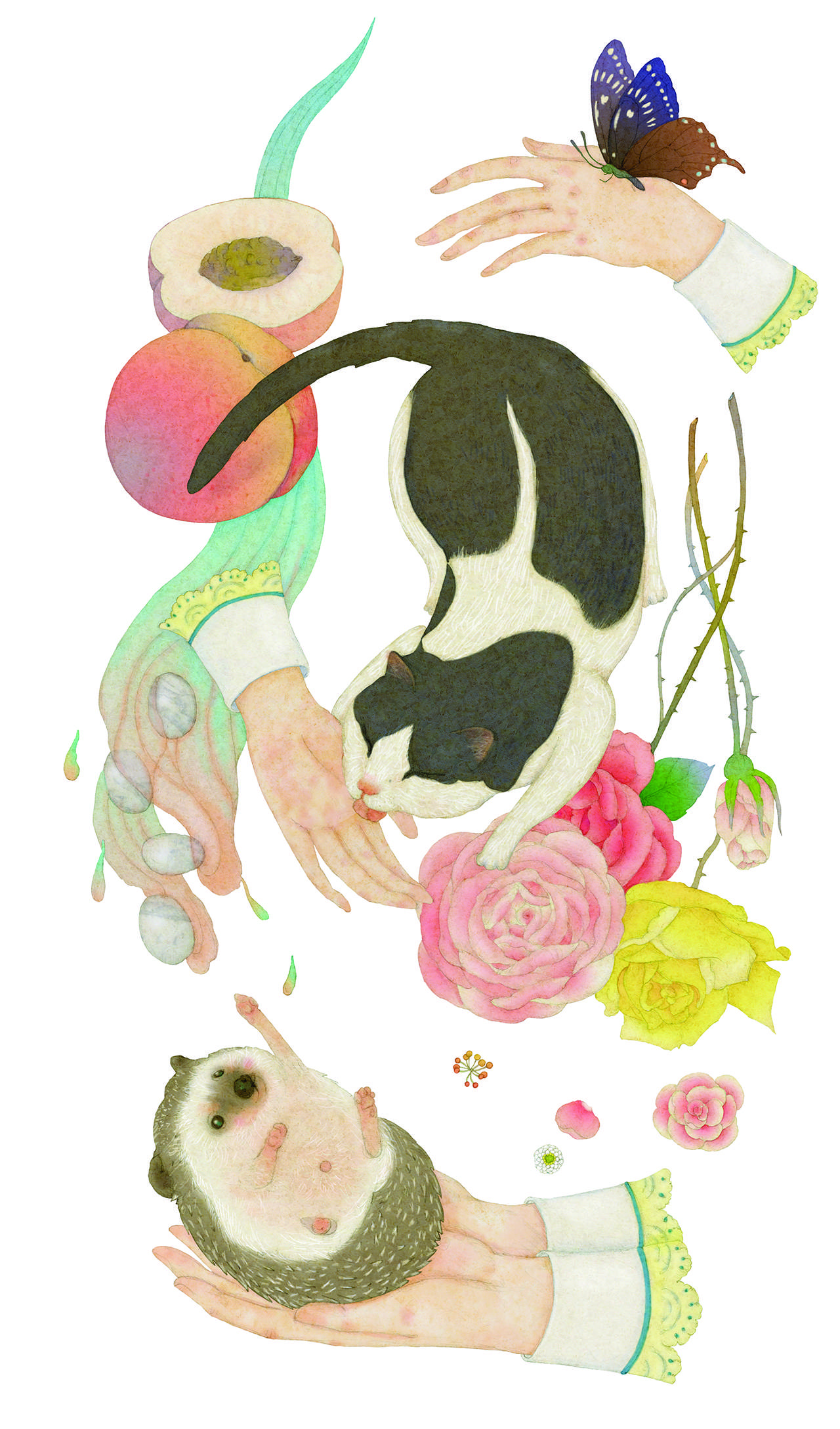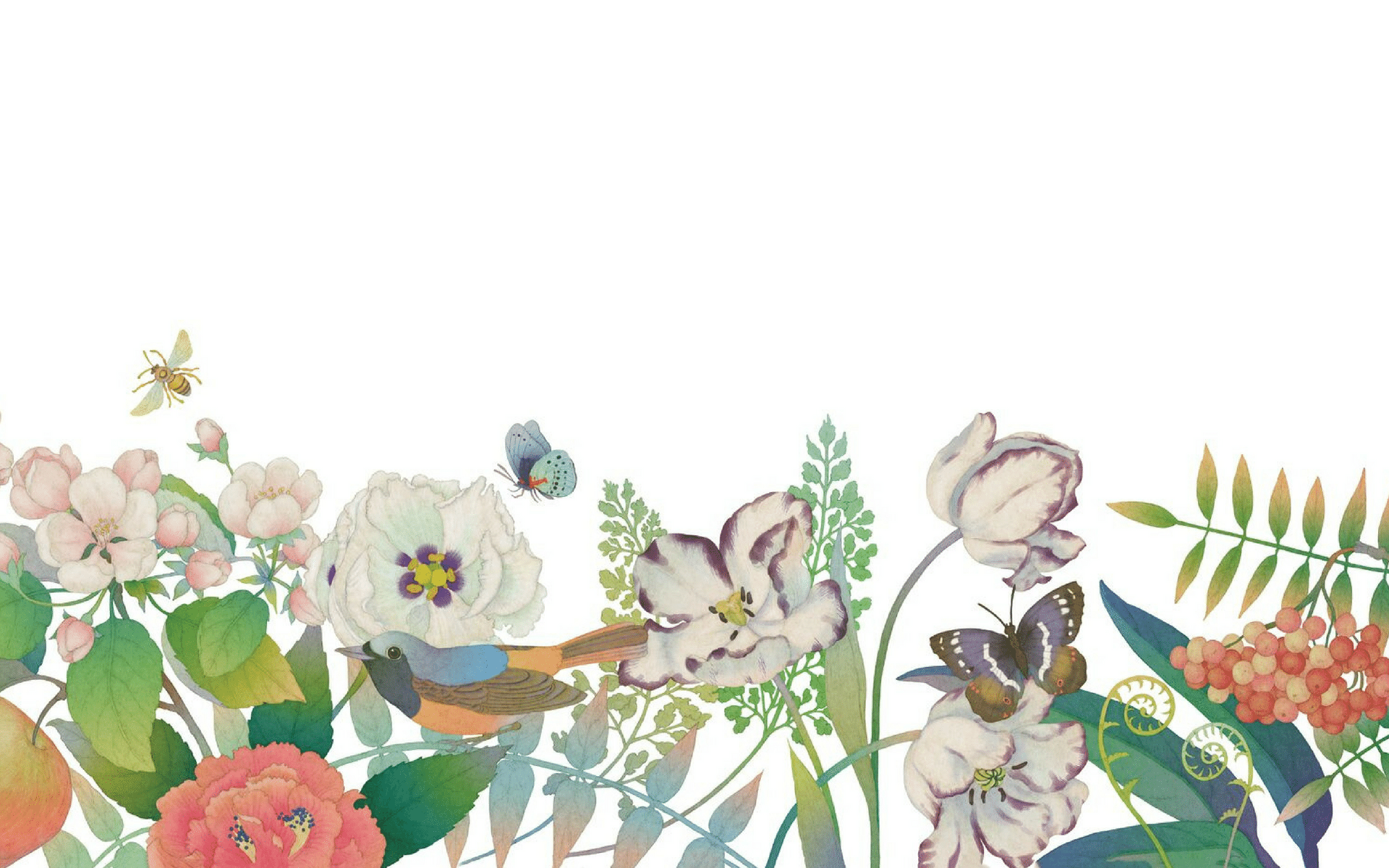Spring: the scent of apple blossoms, the chirping of birds, the riotous colors of tulips, the taste of fiddlehead ferns cooked in butter, the feel of new grass beneath bare feet—this idyllic picture is brought to you by your five senses!
To be alive is miraculous. To truly appreciate life, we need to perceive, to feel—to sense our world. We rely on our sense organs (our eyes, ears, noses, tongues, skin) to be sensitive to light, vibrations, touch, or the very molecules that make up scents and tastes and translate such stimuli into electrical signals that travel via the nervous system to areas in the brain. Those signals are then interpreted so we have fully formed perceptions.
It truly is astounding that we can communicate so intimately and accurately with the world by means of our senses. Yet we tend to take our senses for granted. Mindfulness helps us connect more directly with sense perceptions, bringing us into the present. In mindfulness meditation, by sitting quietly and attending to our breath, we slow down. We aren’t dragged around all the time by our thoughts. Mindfulness in everyday life provides an opportunity to pay extraordinary attention to ordinary sounds, sights, tastes, smells, and touches, many of which we normally overlook. Have you ever really heard your refrigerator? What does the paper in your office printer smell like? Have you noticed the bright red lipstick your coworker is wearing today?
In modern urban life, we suffer from both sensory deprivation and sensory overload. The deprivation comes partly from the narrowing of our physical environment: we ride the same bus or subway every day to work; we sit at a desk, staring into a computer screen. At night, we go home and often stare into more screens. It’s no wonder we crave sensory experiences, seeking out the best coffee, vegetables, or olive oil while we take up gardening, knitting, or cycling, or we head to the gym or the bar after work.
On the other hand, we are bombarded by the excessive sensory input that is part of urban life. Construction noise, bad air, traffic jams, crowds everywhere—we’re so busy going nowhere. No surprise that we also dream of a beach vacation with no agenda or drink ourselves into oblivion on the weekend. Politics, money, relationships, parenting, and jobs all create stress, and stress tends to deaden us and dull our perceptions.
We can’t go on vacation every day or every week, so finding the space and the aliveness within everyday activities seems essential. This is where our senses can really serve us. With all the stresses and strains that we face, our senses can show us and support us in taking a more open and balanced approach to everyday life. These openings to the world are inexpensive. In fact, they freely transmit the beauty, power, and richness of the world. In times like these, let’s celebrate the senses.
Sight
Sight is the overwhelmingly dominant sense. As much as 80% of what we learn comes through our eyes. When you look at something, you may think you’re seeing the object, the thing itself, but you’re really seeing light reflected from that object (unless something is actually self-luminous, like a light bulb). We only see a narrow spectrum of light, which does not include ultraviolet, infrared, x-rays, or other wavelengths. Yet, within this narrow band of perceived reality, we have discovered planets, solar systems, and galaxies. We have looked inward at cells and molecules. We have painted masterpieces.
A mindful approach to seeing is being in the present, without judgment, and taking a fresh look at the world, one that broadens our perception. Our habitual approach is to make judgments that narrow what we see. We accept this and reject that. We like blue but we hate pink. This person is our friend, but that guy is a “jerk.” We have no idea what the “jerk” is wearing. We don’t notice how sad he is.
Or we may see the forest, the overview, and not the trees. When we’re looking for our car in a parking lot, we don’t notice the other vehicles or whether there are clouds in the sky.
Our habitual patterning often leads to pigeonholing, limiting our vision, both literally and metaphorically. But some habitual patterning is essential. Our brains organize visual input into patterns that allow us to recognize what we see. Our brains tell us that the soft red layered ball with a green stick coming out of it, emitting a sweet smell, is actually a rose.
For one moment, it might be worth seeing the petals, feeling their softness, inhaling the scent—experiencing the rose rather than simply labeling it. That’s where mindfulness comes in.
Take A Look
Stand quietly with mindfulness, with your eyes open. Don’t focus on any one thing; simply notice what is in your visual field. You see colors and shapes. You see movement, shadows, light passing across the room or the landscape.
Then very slowly turn your whole body from left to right and then from right to left. Take five minutes to complete both sides. Then look ever so slowly from top to bottom, and then from bottom to top. What do you discover? How do you feel before, during, and after?
The Sense lexicon
There are many phrases in our language that reflect a connection to vision: We use the idea of “seeing” to mean much more than physically seeing someone.
- Seeing is believing
- Out of sight, out of mind
- I’ll see to that
- We don’t see eye to eye
- We’ll see what we can do
- You’re a sight for sore eyes

Sound
Sound adds a rich dimension to what we experience. It alerts us to approaching danger or a much-anticipated visit. It is a key to human communication. It delights us with music, while it irritates us with noise pollution. Sound is created by a series of compression waves that travel outward from the source of the sound. There has to be a medium—solid, liquid, or gaseous—to carry the sound waves, so in a vacuum, there is no sound. In order for us to hear sounds, the mechanical signals from sound waves are converted to electrical signals in the inner ear, which passes these along to the brain. This happens so quickly and seamlessly that we experience a continuum of sight and sound. We see and hear almost simultaneously, unless the sound is travelling from far away, as in the case of distant lightning and the associated thunder.
We react with immediacy to so many sounds: toast popping up in a toaster, the bing of a text message, a police siren, or the shock of the “breaking” news of the day.
We may be largely unaware of habitual sounds in our lives. Do you hear your feet thumping on the stairs? Do you hear your shower while you’re in it? Do you hear your fingers tapping on a keyboard? We can learn to sleep through traffic noise, human voices, and the sounds of wind and rain. Yet we will awaken quickly if the baby is crying.
Sound is also a very emotional medium, evoking both joy and sorrow, in the music we listen or dance to. Turn off the sound to a TV show and listen with subtitles, and you’ll realize how important sound is to your emotional experience of the show.
Now Hear This
We can learn to pay more attention to the soundtrack of our own life. Take a sound walk, where you focus on what you are hearing. Find a place to stop and listen to sounds with your eyes closed.
When you are feeling anxious or stressed, mindfully listening can help you to connect and relax. At work, find a quiet moment to close your eyes and listen to the sounds around you: computer humming, people on the phone, sounds of workmen hammering across the street.
When we have a conversation, we mainly pay attention to what a person is saying. Try listening to how a person is speaking. Are they speaking slowly, very quickly, loudly, softly, in a high- or low-pitched voice? Listen to how they pronounce words. This is an exploration of communication, not a judgment of good and bad speech.
TIP: Keep a sense journal
Journaling about your senses encourages you to be more aware of them. When we pay extra attention to sensory experience, we also begin to uncover the psychological connections with our physical feelings. Keep a five senses diary. Make a daily entry of one experience of each of the five senses. Note any emotions they evoked in you.

Taste
Taste is a direct sense: You can’t taste the vegetables in your garden from the porch. The veggie has to go into your mouth. Adults generally restrict tasting to the food they eat, but infants will put almost anything in their mouths. Taste is obviously an important tool of learning, one that we have to restrict for the child’s own safety.
The tongue can identify five basic taste groups: sweet, salty, bitter, sour, and savory. Other tastes that we can identify include metallic, watery, and fatty. Because of an intimate connection between smell and taste, when we smell a pie cooking in the oven, we can almost taste it. The texture of food has more to do with the sense of touch on our lips and in our mouths than with our taste buds. So our experience of taste actually combines several senses.
The Sense lexicon
Our language around taste is exceptionally diverse, perhaps because we have five distinct taste groups.
- Savor the moment
- Variety is The Spice of Life
- The bitter taste of defeat
- My mood has soured
- Worth your salt
- In poor taste
Taste Life
Wake up your taste buds with these two exercises
1. Slowly eat four very different foods, such as a nut, a noodle, a piece of lettuce, and a spoonful of ice cream. Close your eyes, if you like. Try to discriminate the textures as well as the taste. Can you separate the smell from the taste? Or do you have a unified experience of tasting something, combining these senses?
2. With an attitude of mindfulness and appreciation, go to a wine tasting, to an olive oil store, or to a tea or coffee shop. Sample and savor the wine, the olive oil, or the tea. Or host your own mindful tasting party.
What’s in a Flavor?
We usually think of “flavor” as a product of our taste buds. In truth, many flavors arise from a unique blend of smell and taste through chemosensation—a fancy word for our body’s ability to synthesize chemicals into specific smells and tastes. These sensations begin when molecules are released by various substances, which stimulate special nerve cells in the nose, mouth, or throat. Olfactory (smell nerve) cells are stimulated by the odors around us, while gustatory (taste nerve) cells react to food or drink mixed with saliva. These cells transmit messages to the brain via the olfactory and gustatory nerves, and from there our brains identify flavors.
Smell
Smell operates across space—you can smell coffee brewing across the room or the smoke from a fire miles away. To produce a smell, a substance must be volatile enough to spray microscopic particles into the air. Molecules travel through the air into our noses, where five million receptor cells reside. They trigger impulses to the brain’s olfactory bulb.
Smells warn us, telling us that something is burning or that our food has gone bad. Smells also delight us, bringing us the scents of each season: newly mown grass in the spring or mulled wine in winter.
Smell can also reach across time, connecting us with the past. As Helen Keller wrote, “Smell is a potent wizard that transports you across thousands of miles and all the years you have lived.” The nose transmits information about smells via the thalamus to regions of the brain involved in learning and memory, which may explain why odors are so evocative of former events.
Follow your nose
1. Diane Ackerman wrote that “when we give perfume to someone, we give them liquid memory.” Mindfully smell different perfumes with your eyes closed, either in your own home or at a store.
2. Put a small amount of various loose teas in glasses or small bowls. Close your eyes and smell each sample. You can do this with other foods and drink. Try wine or single-malt scotch. Or some herbs and spices.
3. Take a scent walk. Visit a garden or a forest where you can literally “stop to smell the roses.” In an evergreen forest, can you distinguish between pine needles, fir, and juniper?
The Sense lexicon
More than with the other senses, metaphors relating to smell often have negative connotations.
- That stinks
- The Sweet Smell of Victory
- Wake up and smell the coffee
- Reeks of favoritism
- The stench of failure
Take a Sniff Down Memory Lane
Here’s an exercise to help unlock the connection between smells and memory: Make a list of 10 events, places, and times in your past. Then, while sitting quietly, contemplate how they smelled. Can you remember the smell of your grandmother’s kitchen or her garden? Do you remember the smell of the train station the first time you took the train? When your children were babies, how did they smell when you snuggled them? When you were growing up, do you remember how your dog or your guinea pig’s cage smelled? When you contemplate these times and smells, what other memories or emotions are evoked?

Touch
Touch, like taste, is direct. You can’t touch a piece of paper across the room; you can’t feel pebbles in your shoes when they’re not on your feet.
When we touch something, receptors in our skin transmit information via the nervous system to the brain. Our fingers, hands, toes, and feet are particularly sensitive to touch, yet we feel things in every part of the body: an ant on our calf or a hand on our shoulder.
Our bodies depend on touch to help orient us in space and to guide movement, whether walking, running, or swimming. Without a sense of touch, we would have a difficult time drinking a glass of water. How would you know when the glass touched your lips if you couldn’t feel it?
Feel Your Way
Mindfully explore your sense of touch with these three exercises:
Hands
Touch familiar everyday objects with your eyes closed. Take your time. What does a book feel like? What about a door? The doorknob? A spoon,
a teacup, a paper napkin.
Feet
Mindfully feel the texture and temperature of rugs, tile, wooden floors, and other surfaces in your house. Outside: Feel the grass, the sidewalk, sand in a playground or at the beach.
Body
Focus on how water feels in the shower or a bathtub. Feel rain or snow falling on you. What does wind feel like?



